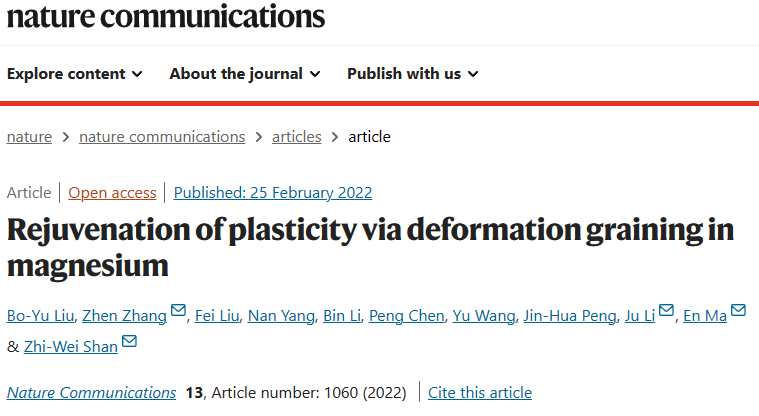
Lightweight Mg and its alloys have received tremendous attention in recent years due to their potential applications for energy savings and emission reduction1,2,3,4,5. A major drawback of Mg, in terms of mechanical properties, is the limited plasticity when compressed along its c-axis (the [0001] direction of hexagonal-close-packed (HCP) structure)6. Unfortunately, compression along this “hard” c-axis is frequently encountered during wrought processing of Mg, because basal texture develops during the processing, orienting most grains into c-axis compression7,8. Therefore, the plastic deformability of Mg in c-axis compression and the underlying mechanisms are of high interest9,10,11. The low c-axis plasticity can be attributed to the high critical resolved shear stress (CRSS) required to activate pyramidal dislocations12,13,14,15, as well as to the formation of \(\{10\bar{1}1\}\)contraction twins that promote strain localization and crack nucleation16.
In this work, we discover a plastic deformation mechanism, deformation graining (DG), of Mg crystal in c-axis compression at high stresses. This mechanism abruptly kicks in after strain hardening to high flow stresses in submicron Mg, and transforms the single crystal into multiple grains with new orientations. The graining allows rejuvenated slip and twinning in the new grains and large plasticity is achieved.
Link:https://www.nature.com/articles/s41467-022-28688-9